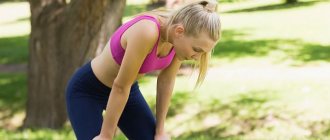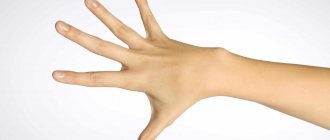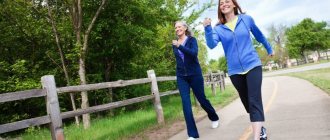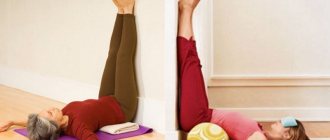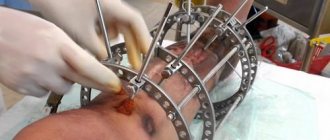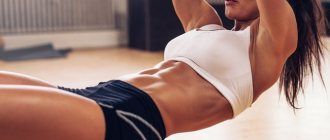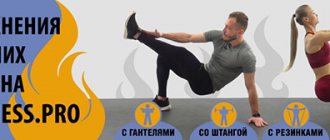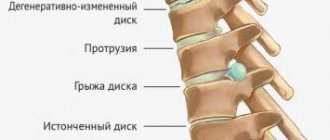Overstrain of muscle tissue with a painful and unpleasant feeling after training is familiar to absolutely every person involved in both amateur and professional sports. The causes of cramps, when muscles begin to cramp, can be very different. The painful sensation most often appears during active training. It can come in two forms - light and heavy.
Muscle groups most susceptible to cramps
The following muscles are most susceptible to overstrain:
- Semimembranosus, biceps, semitendinosus. They form the back of the thigh.
- Calf. Located on the back of the lower leg.
- Four-headed. It is located on the front side of the thigh.
- Breasts. Located along the entire chest.
In addition, the muscles in the arms and even the feet often cramp.
Primary and secondary factors
When idiopathic or primary cramps appear, there are usually no visible reasons; most often they arise due to severe overwork of the said muscle, which develops as a result of playing sports, or when a person spent a very active day and was on his feet all the time.
This can be caused by a sudden disruption of the blood supply, an uncomfortable posture, or natural shortening of the tendons, which is a normal process in older people.
If a person has certain diseases, then the reasons for the development of such seizures will be secondary. Due to poor nutrition, magnesium deficiency may occur, which leads to impaired muscle contractions, which may result in cramps.
Some diseases can also interfere with the absorption of this microelement, and symptoms of a lack of magnesium in the body will be in the form of fatigue, depression, fatigue, headaches and back pain. Blood pressure may increase, arthritis, heart disease, nervous eye tics and seizures may develop.
Cramps may also occur as a result of calcium deficiency; its deficiency will be indicated by brittle bones, brittle nails and split ends, sore teeth, the development of seizures and general fatigue of the body.
This can also be caused by a lack of iron, which is involved in saturating cells with oxygen, and in its absence muscle spasm develops. Diet and taking glucose-lowering medications can lead to the development of seizures.
Brief, painful contractions of the leg muscles can occur when there is a sudden change in body temperature, such as during sunstroke. If the area of the brain that is responsible for motor activity is exposed to nerve impulses, and this happens with influenza, ARVI, stroke and alcohol poisoning.
If blood flow is disrupted, the tissues do not receive the necessary nutrition, which leads to the development of local hypoxia and muscle contraction. Muscle sensitivity is also impaired in the presence of diseases of the spine, when nerve endings are pinched.
At high air temperatures, the body loses a lot of fluid, and along with sweat, beneficial microelements and salts leave, which leads to the development of cramps. Taking contraceptives may also contribute to this.
Who is at potential risk?
Athletes and all people who are physically active are most often susceptible to muscle strain. Spasms can begin not only during the actual training, but also much later. Sometimes cramps occur 4-6 hours after the actual exercise.
Elderly people are also at risk. The main reason for this is the age-related decrease in muscle mass that occurs after 40 years, as well as a sharp decrease in physical activity.
Young children have poor muscle tissue control, so seizures can occur at any time. In pregnant women, in 30% of cases, muscle tissue also cramps. This condition occurs due to a sharp fluctuation in weight in the direction of increasing mass.
Muscle cramps and TRAINING
Carrying out diagnostics and treatment
What to do if your buttocks or abdominal muscles cramp after training - you should:
- Stop performing the exercise that provoked the spasm;
- Perform a soft tissue massage around the numb muscle and try to gently stretch it;
- Rest for 5-7 minutes;
- If pain persists, apply a cooling compress or wrap the leg with an elastic bandage;
- Reduce the load on the muscle during training.
To make a correct diagnosis and prescribe treatment, it is important to describe in detail to the doctor the nature of the pain, answering the questions asked in detail.
Diet
Proper nutrition will help avoid muscle cramps after training. To do this, it is recommended to include foods containing calcium and magnesium in your daily diet. Regular black tea and coffee should be replaced with herbal infusions. This drink helps relieve nervous tension and stress.
And you will have to give up fast food, snacks, pickles, confectionery, sweets and instant food. Such food does not contain useful substances and disrupts metabolic processes in the body, promoting the accumulation of waste and toxins.
Diet for muscle cramps
If you have cramps in your feet, toes, thighs, or ankles after exercise, you can do a few simple exercises.
To get rid of cramps in your calves, stand straight facing a wall or doorway. The toes of the left foot should touch the wall, and the heel should rest on the floor. The leg should be straightened. The right foot stands at a distance of a step from the left. The palm of the left hand rests against the wall. The back is straight. As you exhale, rise up onto the toes of your right foot, keeping your back straight and transferring your body weight to your left leg. Stretching the muscles of the left calf occurs passively. You should move your fingers slightly to feel the degree of stretch.
Stretching exercises will help relieve cramps in the muscles of the back of the thigh. For this you will need a mat. Lay it on the floor and sit down. The left leg should be bent under the buttock, and the right leg, straightened as much as possible, should be taken to the side. You should lean on the palms of your hands, which you place in front of you. The pelvis needs to be slightly raised from the floor and leaned forward.
If it is difficult to maintain balance, you can place a piece of paper under your right knee. It is important to avoid moving your body backwards. Take a deep breath. As you exhale, notice the tension in the abdominal muscles of your lower abdomen. Slowly bend your arms and stretch your hip, transferring the weight of your torso to the muscles of the back of the thigh.
The following exercise will help relieve spasm of the quadriceps femoris muscle: get into a lunge position. You will need support for your arms up to the middle of your chest and a mat for your knee. Perform a deep lunge: the foot of the right leg should be as close to the buttocks as possible. Bend your left limb at the knee, grab your foot with your left hand and gently pull the heel towards your butt.
We shift the body weight forward, unloading the knee joint. The elbow of the left hand should be in line with the shoulder, and the fingers should “look” at the floor, holding the foot. When performing the exercise, it is important to feel how the muscle of the front of the thigh stretches. After this, you need to tilt your torso forward, trying to touch your right leg.
Exercises to stretch muscles
Some people prefer home treatment to going to the doctor. Folk remedies are not a panacea for all diseases. It is recommended to undergo a comprehensive examination. But some methods are effective, we will discuss them below.
- Lemon juice, which is recommended to be rubbed into problem areas and not wiped dry, helps against discomfort in the calves.
- You can try rubbing your skin with unrefined vegetable oil, which previously had crushed bay leaves in it for two weeks. The prerequisites are that the infusion is stored in a dry, dark place, and the bay leaf is first ground into powder.
- A decoction of birch buds is effective. They need to be brewed in a glass of boiling water and drunk for two days.
- You can use linden color. You will need 50 grams of linden flowers (chopped). They are poured with boiling water and left for 20 minutes. The broth should be strained and taken a quarter glass three times a day.
- Spasms go away thanks to Adonis infusion. The crushed plant is poured with boiling water and infused, as in the previous recipe. Take in the same way as linden blossom infusion.
- Decoctions of various herbs and plants are effective: walnut, lily of the valley, heather, barberry, hawthorn, blackberry, hops, thyme, chamomile, oregano and black elderberry.
- An infusion of cinquefoil, which should be taken three times a day, pacifies spasms.
- To relax your muscles and get rid of cramps, you can make a decoction of fennel fruits, anise, cumin and mint leaves, which are poured with boiling water. The resulting mixture should infuse. It is carefully filtered and drunk all day in small sips.
- A regular chamomile decoction also helps. Dried flowers can be bought at any pharmacy, and they are inexpensive. Chamomile needs to be infused, pour boiling water over it, and strain. Then take a third of a glass of the decoction for a week, preferably after meals three times a day.
- Honey is an anticonvulsant product. It is taken 30 grams before meals three times a day. Within a week, spasms will become much less common. But at the first sign of an allergy to honey, you should stop using it.
- A mixture of celandine juice and Vaseline works well. They must be mixed in a 1:2 ratio. This composition should be rubbed into the calves in the evenings with massaging movements. After two weeks the cramps will subside.
If seizures occur constantly, then you must definitely consult a doctor to determine the cause of their occurrence; for this you must first undergo an examination by a therapist. After the examination and tests, it may be necessary to consult a cardiologist, endocrinologist or neurologist.
The doctor will be able to determine the cause of this pathology, treat the disease that led to this, after which the seizures will disappear. If no diseases causing such symptoms are found, then the doctor will recommend what lifestyle needs to be led and what rules to follow so that such a problem does not arise.
The fight against this disease is to eliminate the causes that led to its development.
To ensure that the described problems do not arise, you must adhere to the following rules:
- review your diet, it should be varied and balanced;
- subject your body to moderate physical activity, but you should not allow it to be overexerted frequently or excessively;
- You should not overuse diuretics, as their use leads to increased leaching of microelements and vitamins from the body;
- Periodically perform simple stretching exercises to prevent the tendons from drying out.
We suggest you read Where to check the veins and blood vessels in the legs
If your leg cramps at night or in the morning, you should not panic, you should try to relax, start breathing deeply, such actions will normalize the blood circulation process.
In such cases, doctors recommend carefully standing on the floor, with your legs together and straightened. When a spasm appears, you can pull your foot towards you, although this increases the pain, but after stretching the muscle, the spasm goes away
To relieve cramps, you can rub the sore leg or pinch it, or massage it using a warming ointment. When the attack passes, you need to take a comfortable position, with your legs slightly higher than your head.
If your leg cramps in the water, then it is more dangerous, especially if the person begins to panic. If this happened at depth, then the actions should be as follows:
- calm down and don’t panic;
- roll over onto your back;
- pull your foot towards you;
- if that doesn't help, pinch your leg.
All accidents happen due to panic, when a person becomes nervous and swallows water. Do not swim in open water if the water temperature is less than 18°C, as cramps usually appear in cold water. Although the concept of cold water will be different for each person.
Reasons for muscle contraction
Seizures may occur due to:
- severe overexertion, which intensifies against the backdrop of high temperatures, when a large number of microelements are excreted from the body along with sweat;
- some chronic diseases;
- hypothermia;
- taking certain medications;
- abuse of alcoholic beverages and smoking;
- overweight;
- nervous diseases.
Often the cause of cramps can be tendon strains, as well as excessively high load on the muscles.
Muscle fatigue and neuromuscular control
Most people associate muscle pain after exercise with tissue growth, which is a mistake. Unpleasant painful sensations are a reaction of the body that signals a person about excessively high loads or microscopic damage.
To avoid this, muscle tissue needs to adapt, that is, establish a neuromuscular connection when information about active physical activity is stored in memory. It is much easier for a person to get back into good shape and not suffer from overexertion when he previously played sports. Prepared muscles become more resilient, stronger, and grow faster in volume.
Neuromuscular control is a critical tool in cramp prevention for those who have taken breaks from training for any reason. This will allow you to recover three to four times faster when you return to the gym after suffering an injury and so on.
Dehydration or electrolyte deficiency
Exercise provokes increased sweating, which leads to loss of salts and moisture. Sodium, calcium, magnesium, and potassium ions are removed from the body. This condition often causes dehydration and spasmodic attacks.
Against the background of water imbalance, it disrupts the exchange of electrolytes. It should be understood that this can happen not only due to training, but also due to a lack of clean drinking water drunk during the day. To avoid problems, it is necessary to maintain normal water-salt balance.
Other reasons
Cramps are most often mild, but sometimes indicate hidden illnesses. If cramping occurs frequently, you should make an appointment with your doctor.
Muscle strain may be due to:
- diseases of the musculoskeletal system, including osteochondrosis;
- circulatory disorders;
- problems of the nervous system;
- metabolic disorders;
- diseases of the thyroid gland;
- varicose veins;
- vitamin deficiency.
Some medications can also cause muscle tissue tension.
What kind of seizure prevention does official medicine use in Russia?
Most often, to prevent cramps when jogging, vitamin and mineral complexes with magnesium, calcium, iodine, iron, and vitamins B, A, C, D and E are prescribed.
We must not forget about the required volume of water entering the body. For a person weighing 60 kg, it is necessary to drink about 2 liters of clean water per day. The higher the body or environmental temperature, the more you need to drink. Dehydration greatly increases the likelihood of seizures.
And it is important to know that frequent cramps are not only an unpleasant sensation, but also a signal from the body about serious disturbances in the functioning of the body.
What to do?
Typically, spasmodic attacks do not require any special therapy, but require a certain sequence of actions that will help eliminate the spasm:
- Stopping the movement that provoked the spasm.
- Slowly massage and stretch the muscle.
- Relax and unwind for a few minutes.
- Cooling with ice or applying an elastic bandage.
When these manipulations do not relieve painful contractions, you should contact a specialist who will accurately diagnose and give instructions for further action.
Prevention of muscle spasms
The best remedy for cramps is good stretching, so warming up and cooling down is essential. This reduces the likelihood of muscle contraction by 80%. In addition, massage also helps a lot.
Rubbing the muscles should be carried out using oils, which not only make the process more enjoyable, but also help replenish microelements in the muscles. It is recommended to apply something warm to the problem area after the massage.
Rubbing the hands and feet is aimed at massaging the points that connect the body. Along with massage, warm baths are useful, since water also gives a slight massage effect. It is good to take water treatments with herbs, because aromatherapy allows you to relax well.
Immediate help
- If a cramp seizes the calf on your leg, you should squeeze it with force and press your finger into the center for half a minute. The method helps improve blood flow to the muscle.
- To relieve spasm, it is recommended to press firmly on the center of the lower lip for thirty seconds.
- It will be useful to perform a light massage in the calf area to stimulate blood circulation.
- Raising your legs up helps improve blood flow.
- Sharp acute spastic pain is relieved by a sharp injection into the affected area.
- To relieve convulsive symptoms - pulling, stabbing sensations - hot and cold compresses are applied alternately.

